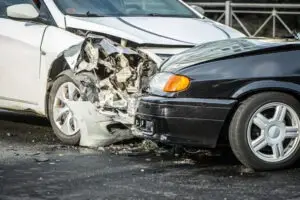
If you have been in an accident, you can use several types of evidence to support your case. Certain evidence must prove negligence and liability, while others must support the extent of your injuries and how they affect your life.
Police reports, medical records, forensic evidence, photographic evidence, and other examples of compelling evidence in injury claims. With help from a personal injury lawyer, you can win your case and recover the compensation you deserve.
Types of Evidence to Prove Fault and Negligence
Your personal injury lawyer must introduce evidence that convinces the jury that the defendant is more than likely responsible for causing your accident, damages, and resulting injuries. The attorney can use multiple pieces of evidence to support the defendant’s culpability. Some examples of these include:
- Accident reconstructionist reports
- Video footage of the accident
- Photos of the accident scene
- Police reports
- Miscellaneous evidence
Accident Reconstructionist Reports
Your attorney can hire expert witnesses and work with accident reconstructionists to establish liability and negligence. Accident reconstructionists will thoroughly reconstruct the accident you were in to recreate the accident and establish liability.
Then, the accident reconstructionist will write a report showing the defendant’s negligence when you file a claim with their insurance company or bring your case to court. The accident reconstructionist may also testify about their accident reconstruction testing findings at trial.
Video Footage of the Accident
Obtaining video footage of the accident may be valuable in proving the defendant’s liability. You might find the video evidence needed to support your case in multiple locations. Some common areas for these cameras could include:
- Dashcams from motor vehicles
- Traffic camera footage obtained
- Personal home surveillance footage from nearby residences
- Video surveillance footage from nearby businesses
- Personal video footage from a cell phone at the accident scene
By using video footage of the accident, an accident reconstructionist will have additional facts they need to recreate the accident accurately. This way, there is little doubt about how the accident occurred and who is responsible.
Photos of the Accident Scene
At the scene of your accident, do what you can to take photos of your injuries and the surrounding property damages. These photos can be introduced as evidence at trial or submitted with your insurance claim. By providing pictures, you can demonstrate the severity of the accident you were involved in.
Police Reports
Even if you initially feel OK after the accident or hope to resolve your case without law enforcement, calling the police to the accident scene is essential. When law enforcement arrives, they can take steps to investigate liability.
Law enforcement will look for signs of criminal law violations, such as driving recklessly or under the influence of drugs or alcohol. They can fill out a police or accident report that details important information that will be valuable at trial, such as:
- How the accident happened
- Who is responsible for the accident
- The severity of your injuries
- The names and statements from witnesses
- When the accident occurred
Miscellaneous Evidence
Other evidence could help prove the defendant’s liability, depending on the accident you were in. For instance, if you were involved in a motor vehicle crash, your lawyer would take steps to obtain copies of the liable party’s chemical blood alcohol test results and cell phone records to determine whether impaired or distracted driving caused or contributed to the collision.
For a free legal consultation, call,
(888) 585-2188
Types of Evidence to Prove the Extent of Your Damages
In addition to providing evidence of liability, you will need to introduce evidence proving the extent of your injuries and damages. Generally, this is by providing copies of your medical records, personal journal entries, and testimony from friends and family in court.
Medical Records
Having medical records to support your case is crucial. When they can indicate your injuries’ physical and psychological impact, the insurance company, judge, and jury will see how significantly your injuries affect your life. Examples of such medical records could include:
- Diagnostic imaging test results
- Physical evaluation by physicians
- Ongoing treatment regimens
- Descriptions of prescribed or over-the-counter medications
- Healthcare provider statements
Personal Journal Entries
One of the best ways to track and prove the severity of your injuries is to document your experiences in a personal journal. When the court can see in your words how your life has been turned upside down emotionally by the physical, financial, and psychological trauma, it may better understand why you are requesting compensation.
Testimony From Family and Friends
You can also introduce testimony from friends and at trial. The courts do not know you, the activities you previously loved, your relationships with family and friends, or anything else about you.
When you have friends and family testify about how the accident’s trauma affects you, they are likely to take your case more seriously.
Call Jenner Law Today – Our Personal Injury Lawyer Can Help
While you heal from your accident-related injuries, a personal injury lawyer at Jenner Law can conduct a thorough investigation to obtain the compelling evidence we need to prove negligence and the significance of your injuries.
We want you to focus on recuperating while we handle the legal details. Please call our office for a no-cost, risk-free consultation so that we can review your legal options, explain the kinds of accident-related evidence you should have, and answer your questions.
